Today sewing blog post is a step-by-step guide to sewing sleeves and fitting zips. These handy projects have been extracted from Jules Fallon’s brand new book Complete Dressmaking (published by Quarto Press). I’ve started reading the book this month and I’ve already learnt a thing or two about sewing that I never knew before. It’s perfect for beginners and hobbyists alike, and explains in detail all the technical terms and sewing techniques (that might otherwise put you off making a dress!) to makes it super-easy to get started. And the great news is that I have THREE copies of the book to giveaway so read on to enter!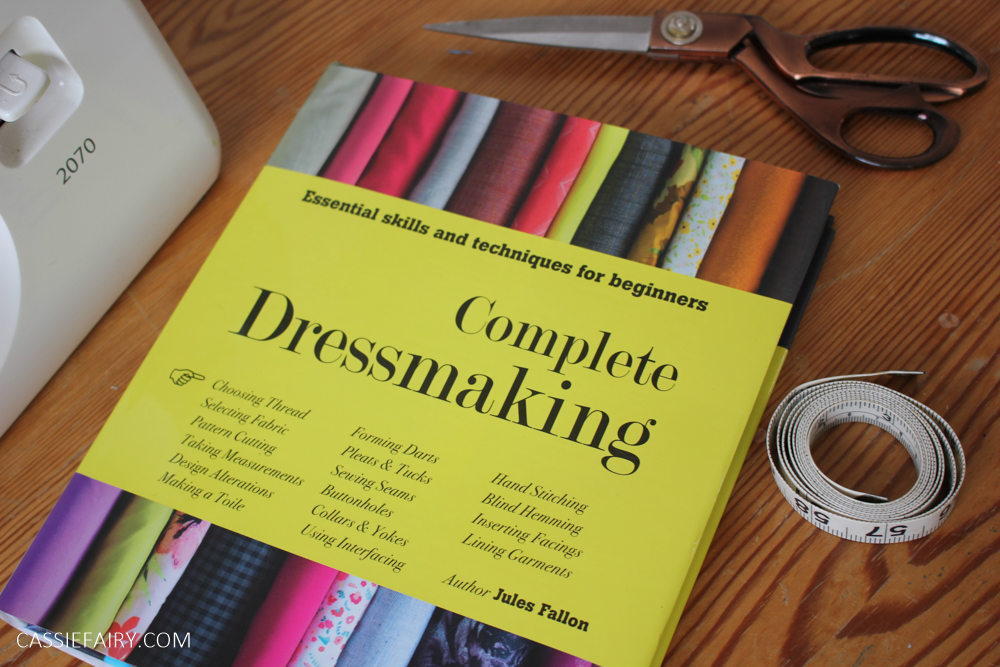
How to insert a Concealed Zip
Concealed, or invisible, zips are found in a lot of commercially produced garments and are just that – concealed; all you should see is the zip pull. The big difference with putting in this type of zip is that, instead of being inserted into a gap in the seam, the zip is inserted first and then the seam is stitched afterwards.
It is possible to sew a concealed zip with an ordinary zipper foot, but to get the best results you will need a special concealed zipper foot for your machine. This helps to roll out the coil of the zip teeth so that the needle can sew just into the groove. No zip tape should be visible from the right side of the garment after the zip has been sewn in.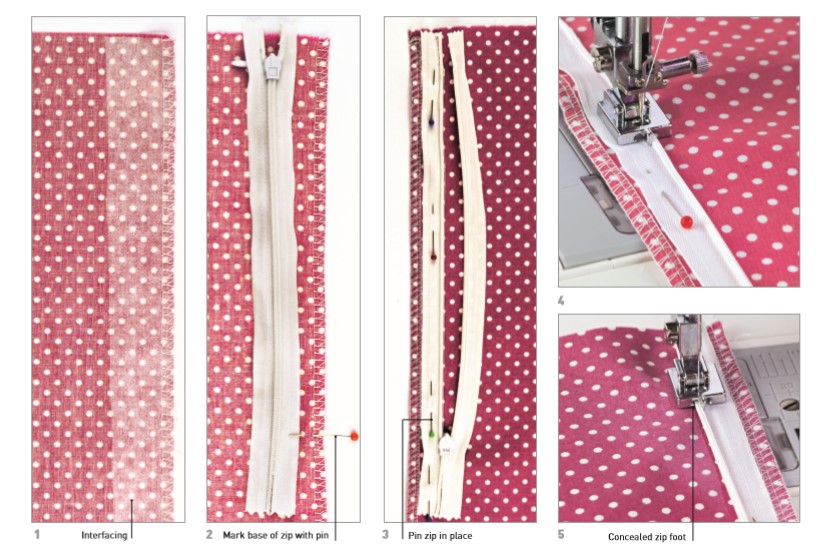
1 Apply a strip of very lightweight interfacing down the seam allowances where the zip is to be inserted to stabilise the opening and prevent the seam from warping or stretching as the zip is sewn in. If the garment is to be unlined, it is better to neaten the seam allowances with your choice of finish before you insert the zip.
2 Lay the zip along the seam line, with
the zip head just below the top seam allowance. Measure down and mark with a pin where the bottom of the zip opening will be. You won’t be able to stitch right to the end of the zip, so the zip will need to be at least 2cm (3⁄4in) longer than the opening.
Tip: Prepare the zip by opening it and gently rolling the zip teeth back. Press with a warm iron. This just helps flatten the zip coil slightly and enables the needle to get in closer.
3 Open the zip and place it right side down on the left-hand side of the garment, with the edge of the zip tape parallel with the raw edges of the seam allowance and the zip teeth on the stitching line. Pin in place.
4 Make sure that the right-hand coil of the zip sits under the right-hand groove on the concealed zipper foot. Backstitch to start and then sew down the zip, gently rolling back the zip coil as you go. Sew down until you are level with the mark for the zip opening.
5 Close the zip and line it up along the other side of the garment, with the left-hand side of the zip tape parallel with
the seam allowance. Stitch down the left side of the zip, this time with the zip coil
in the left-hand groove of the concealed zipper foot.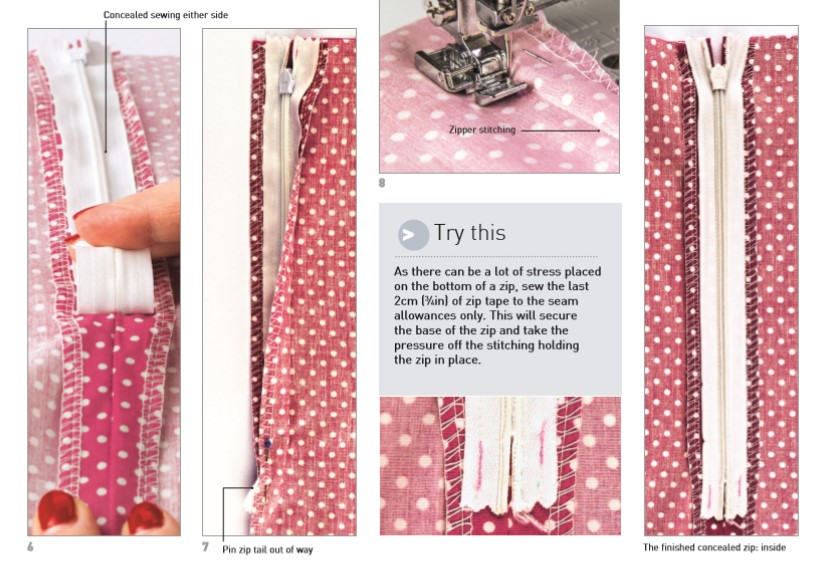
6 Both ends of stitching should finish at the same level to secure the zip.
7 Pin the rest of the seam, making sure that the ends of the zip are pulled up and out between the seam allowances so that the zip is out of the way when the seam
is stitched.
8 Change to a normal zipper foot, with the needle to the right of the foot. Sew up from the hem and sew a couple of stitches past the end of the stitching in order to secure the zip. Press the seam open, then flip everything over and give it a good steam from the right side.
Sewing sleeves
A set-in sleeve, as the name suggests, is a sleeve that is set into an armhole. The sleeve itself can be varied in shape and length, but the basic method for sewing one is the same.
Most set-in sleeves are a slightly different shape at the front than the back; this is to allow for ease of movement so that the sleeve will not feel restrictive in wear. The front and back are differentiated by notches – typically a single notch for the front and a double notch for the back.
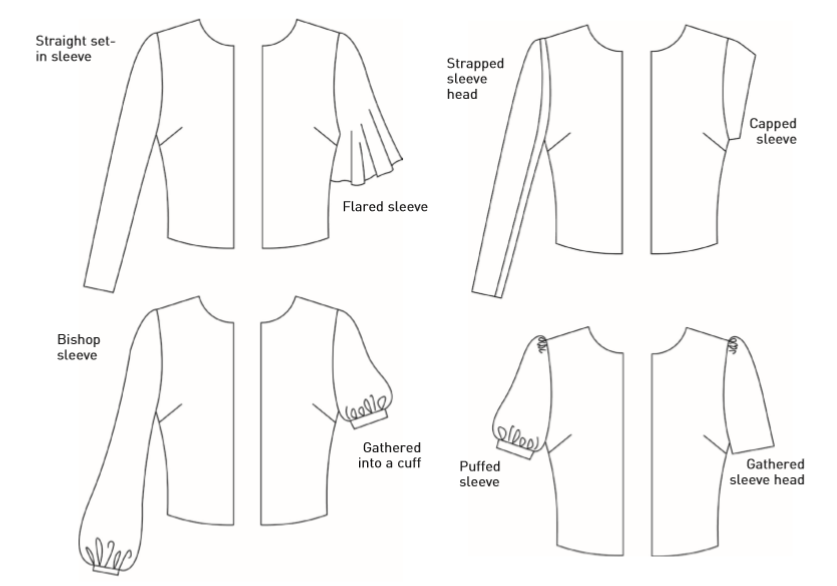
How to sew a Set-in Sleeve
1 The sleeve head between the notches is slightly larger than the space into which it has to fit in the armhole. This is to allow for ease of movement.
To help the sleeve to fit into the armhole, sew a row of easing stitches across the sleeve head inside the seam allowance. Then gently pull the bobbin thread to ease up the fabric to fit into the armhole.
2 Sew the underarm seam together to make the sleeve. Sew the bodice together to create the armhole. The seam allowances can be neatened if the garment is not lined.
3 With the sleeve right side out and the bodice inside out, slide the sleeve into the armhole. Match up the underarm seam on the sleeve with the side seam on the bodice. Match up the single front notches and double back notches and pin around the lower section of the armhole.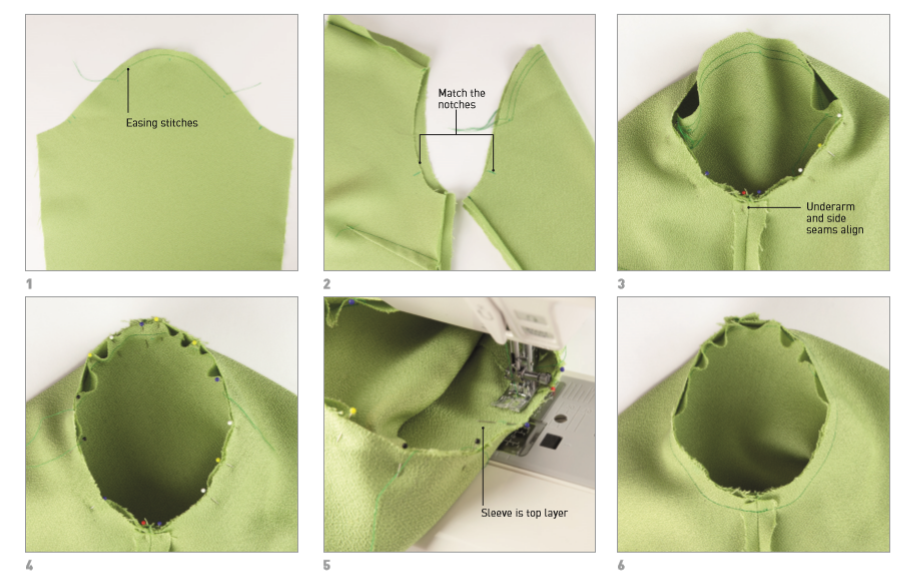 Tip: If you are unsure which sleeve goes into which armhole, lay the garment right side out in front of you and place each sleeve next to the corresponding armhole. Look for the notches! Pinch the side seam and sleeve underarm seam together and pin. Now when you turn the bodice inside out you know which sleeve fits into which armhole.
Tip: If you are unsure which sleeve goes into which armhole, lay the garment right side out in front of you and place each sleeve next to the corresponding armhole. Look for the notches! Pinch the side seam and sleeve underarm seam together and pin. Now when you turn the bodice inside out you know which sleeve fits into which armhole.
4 Match up the dot on the sleeve head with the shoulder seam on the bodice and pin. Gently pull up the bobbin thread of the easing stitches to make the sleeve head fit into the armhole. Even out the fabric and pin in place.
Tip: Keep the sleeve head at the shoulder point flatter, as the grain of the fabric on the sleeve will not allow the fabric to be eased in as much here. Rely on easing the fabric over the curves of the sleeve head, as this is where the grain of the fabric is more flexible.
5 Place the garment on the sewing machine, with the bodice underneath and the sleeve on top. Sew inside the circle of the armhole so that you can see where you have eased the sleeve head.
6 Sew all the way around the armhole, overlapping the stitching when you get back to the beginning. Fasten off your sewing.
7 Press the seam towards the sleeve.
You can neaten the seam if the garment is not lined.
Try this
If the fabric you are working with is not sitting properly, then use an extra row of easing stitches below the seam line. These stitches can be removed later on. Pin around the sleeve head vertically, with the heads of the pins over the edges of the fabric. This will make it easier to take the pins out as you sew – and you won’t catch yourself on the pins when you handle the garment.
Projects extracted from Complete Dressmaking by Jules Fallon. Published by Quarto Press (£20). Out now.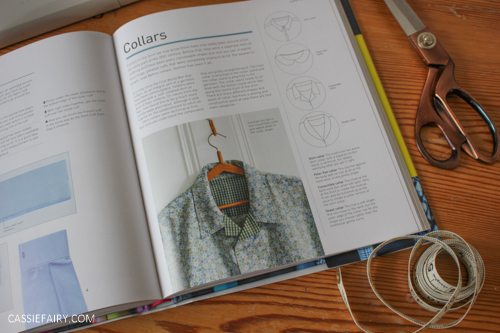
And now, on to the competition. The publishers have kindly offered three copies of Complete Dressmaking so three lucky winners will get their hands on this fantastic book. There are plenty of ways to earn entries into the prize draw so get tweeting, liking and commenting now!
Giveaway open to UK residents only, 3 x winners will need to provide a UK delivery address to receive their prize, competition runs from 13th July – 30th July 2017 – good luck!


















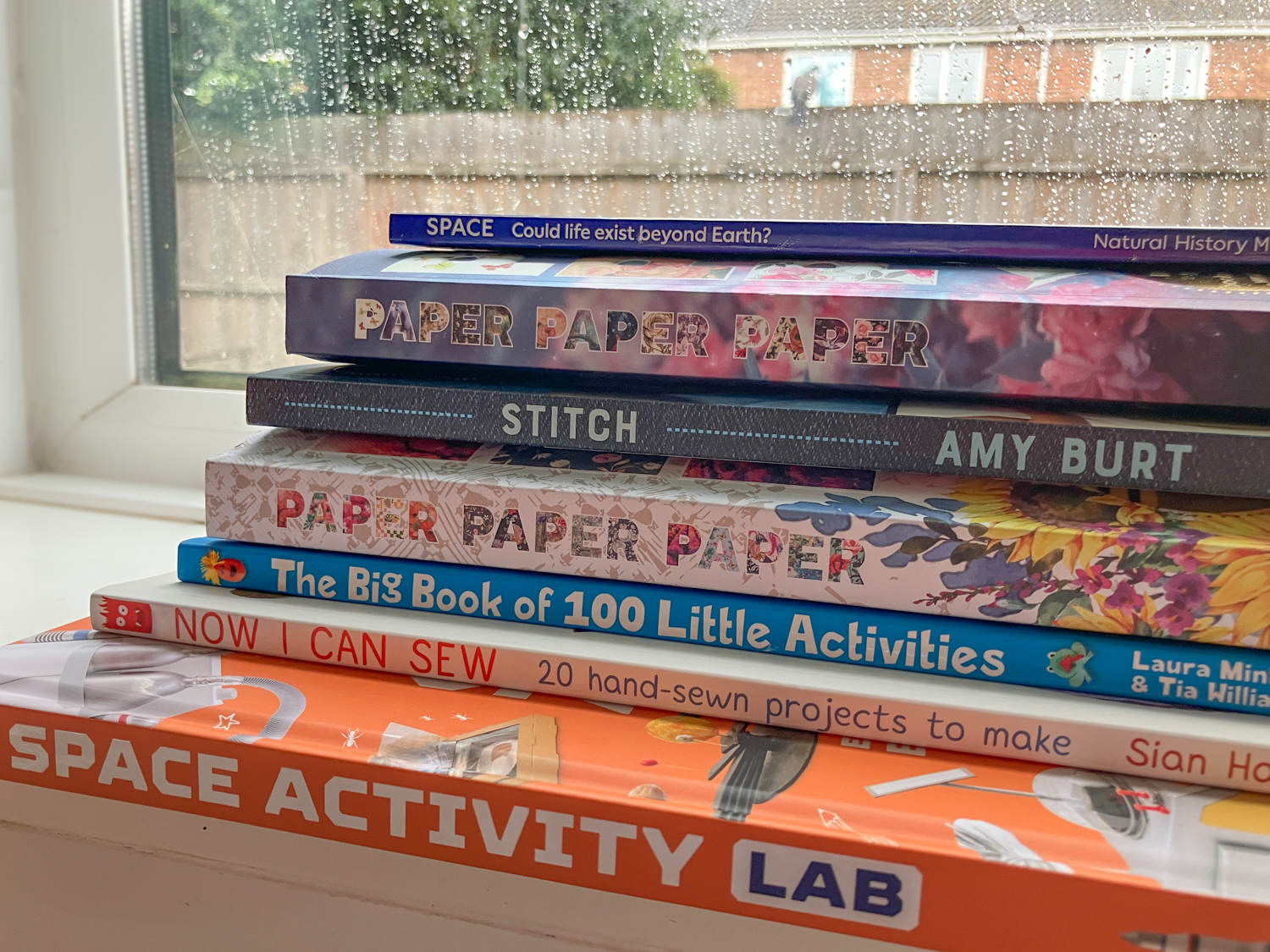
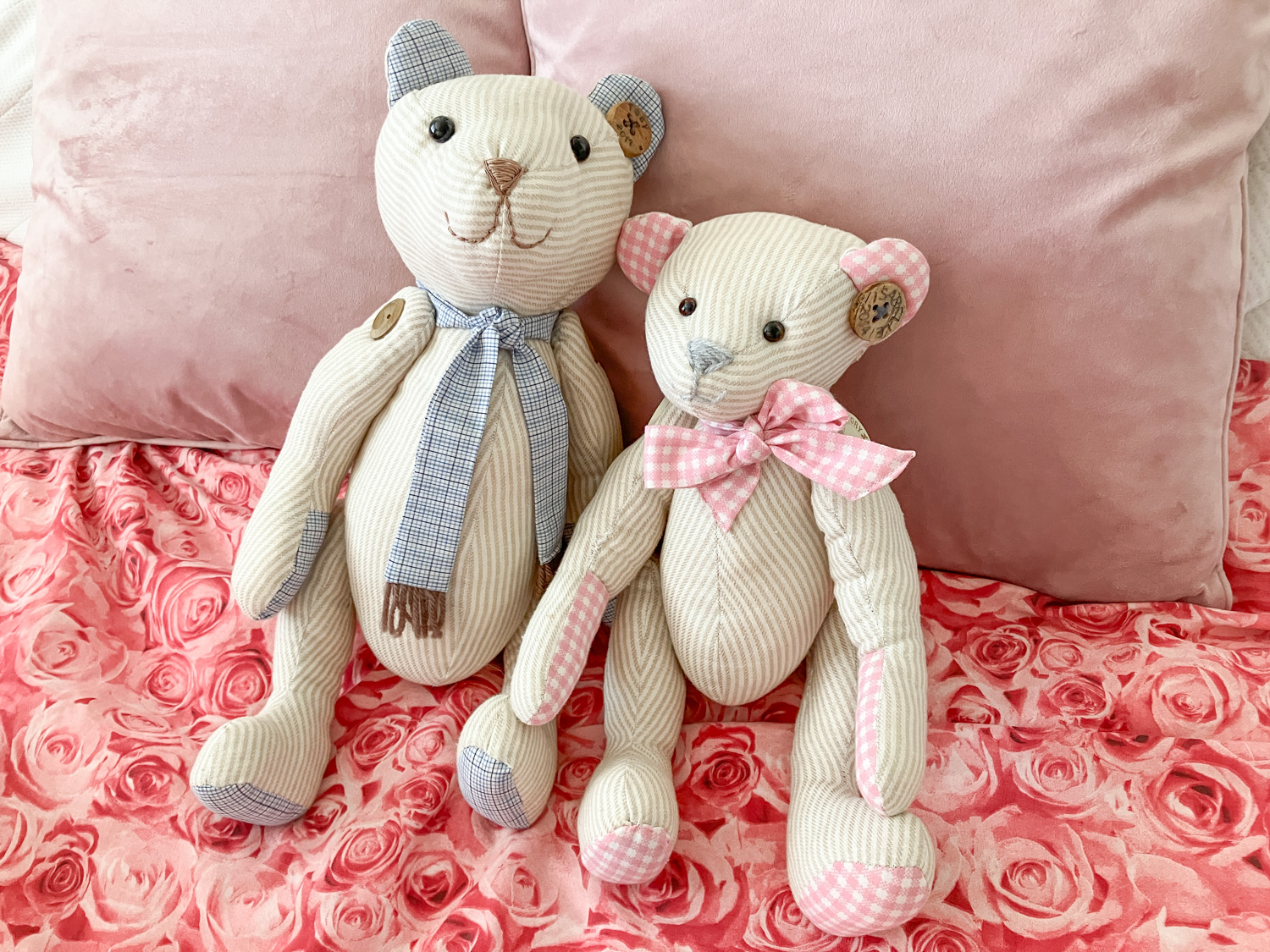



10 responses
I would love to make a dress. I made a skirt once but would love to make a dress that compliments the curves and makes me feel elegant
I’ve made pillow covers, but would love to make a dress, so this would be really helpful x
I’d love to make a quilt
I got my daughter a sewing machine for her birthday and we have made a skirt. I have made a chair from pallets, so the next job is to make cushion covers for the chair. Would love to be able to make dresses
I started trying to make a dress a few years ago – and never finished it – would love to complete a dress!
Really useful tips and tutorial. My next project is going to be making some jeans!
I would love to have the confidence to make myself a dress, so far I have mastered cushions and a few years ago made my son a waistcoat for his christening.
I have a half finished summer cotton skirt so I would like to finish that, thank you for the zip tutorial it is really helpful. I would also like to make some simple PJ bottoms for the summer.
So pleased to see the sewing sleeve blog today as I have just been battling with sewing tiny doll dresses and the sleeves have been a bit of a challenge! I can now see where I was going wrong! Thank you!
I sew all the time – usually making and creating gifts and furnishings for our home – I would really love to create a patchwork quilt though or a patchwork beanbag! I would also love to learn how to customise clothing too!